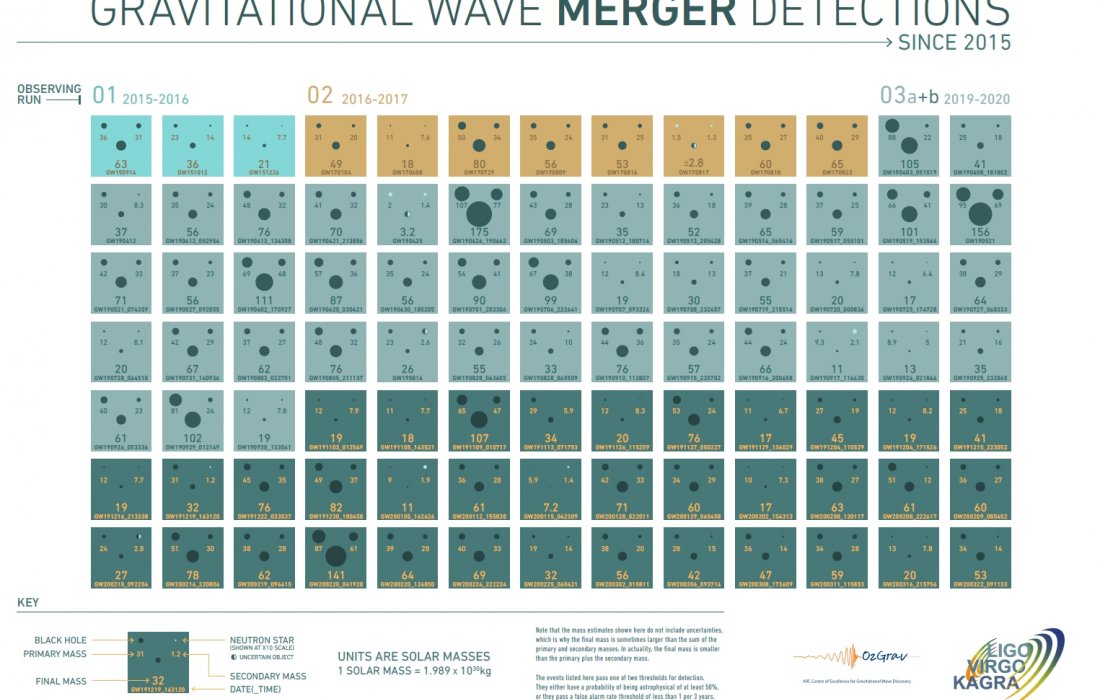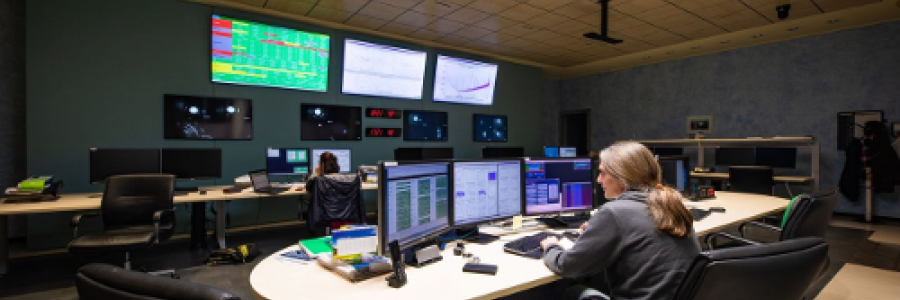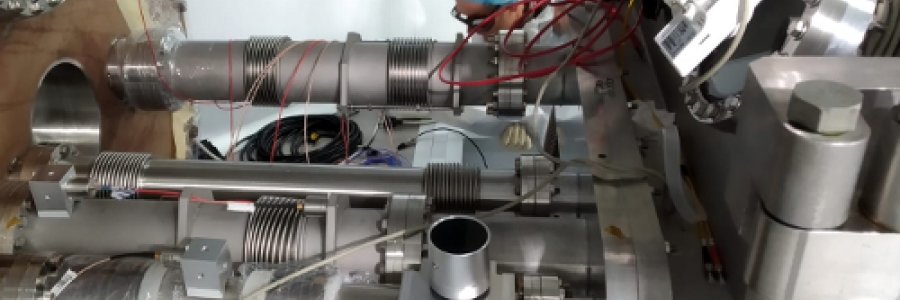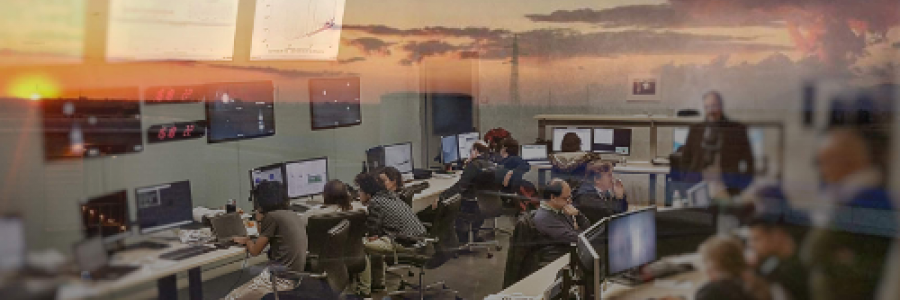35 new events detected by LIGO and Virgo in their latest observation period bring to 90 the gravitational waves detected to date by the global three-interferometer network. Most of the new signals originate from the whirling spiral of two merging black holes: cosmic quakes that shake the fabric of spacetime, generating a powerful burst of gravitational waves.
The Virgo, LIGO and KAGRA scientific collaborations today announced the first observation ever of binary systems consisting of a neutron star (NS) and a black hole (BH). This was made possible by the detection, in January 2020, of gravitational signals (nicknamed GW200105 and GW200115 from the dates of their detection) emitted by two systems, in which a black hole and a neutron star, rotating around each other, merged into a single compact object. The existence of these systems was predicted by astronomers several decades ago, but they had never been observed with confidence, either through electromagnetic or gravitational signals, until now. The result and its astrophysical implications have today been published in The Astrophysical Journal Letters.
While Virgo and LIGO have been undergoing upgrades, the data from the early part of the third observing run of the detectors (from April to September, 2019), have been analysed by researchers to look for signs of continuous emission of gravitational waves from rapidly spinning neutron stars. This makes it possible to set new, clear constraints for future searches. Theory has it that, as they rotate, neutron stars emit continuous gravitational waves, because of asymmetries in the mass distribution around the rotation axis. The asymmetries may be due, for instance, to misalignments between their symmetry and rotation axes or to imperfections, sort of ‘mountains’, in the outer crust.
The LIGO, Virgo and KAGRA collaborations have declared that, mainly because of COVID-related issues, the fourth observation period, known as 'O4', will not begin before June, 2022. The three scientific collaborations foresee further potential refinements in the coming months, as the impact of the pandemic on the scheduled detector upgrades is more fully understood.
The classification and definitive analysis of the 39 events detected by Virgo and LIGO in the third observation period (which ran from April to October 2019) was published today on the ArXiv online archive. Most of these are black hole mergers, the characteristics of which, however, question some established astrophysical models and open up new scenarios.
A quantum mechanical effect measured for the first time in the Advanced Virgo and LIGO gravitational-wave detectors. Quantum mechanics does not only describe how the world works on its smallest scales, but also affects the motion of macroscopic objects, such as the 42-kilogram mirrors of the Virgo interferometer. To detect gravitational waves, Virgo and LIGO measure tiny changes in the lengths of their laser interferometer arms, changes as small as one thousandth of a proton diameter.
Virgo and LIGO have announced the detection of an extraordinarily massive merging binary system: two black holes of 66 and 85 solar masses, which generated a final black hole of 142 solar masses. Both the initial black holes, as well as the remnant, lie in a range of mass that has never before been observed, either via gravitational waves or with electromagnetic observations.
Another unprecedented discovery has just been unveiled by LIGO–Virgo scientists. Data from the third observation period (O3) of the Advanced LIGO and Advanced Virgo detectors reveal that, at 21:10 (UTC) on the 14th of August, 2019, the three instruments in the network detected a gravitational-wave signal, called GW190814. The signal originated from the merger of an enigmatic couple: a binary system composed of a black hole, 23 times heavier than our sun, and a much lighter object, about 2.6 times the mass of the Sun. The merger resulted in a final black hole about 25 times the mass of the sun.
The third LIGO–Virgo observing period (O3) is offering new insights into the late inspiral and merger phase of binary black hole (BBH) systems. The first gravitational-wave event GW150914, detected back in 2015, originated from a binary black hole merger, and since then this class of events has become the most prominent. The signal, named GW190412, was detected by the Advanced Virgo and the two Advanced LIGO detectors, and it was produced by a coalescing BBH system with unequal masses, one component being more than 3 times heavier than the other one.
Giovanni Losurdo, research director at the Institute for Nuclear Physics (INFN) in Italy, has been appointed as the new Spokesperson of the Virgo Collaboration. From 2009 to 2017, he was Project Leader of Advanced Virgo, the programme of upgrades to the detector that made it possible for Virgo to participate alongside the two LIGO detectors, in the US, in the second observation period, called 'O2'.
The LIGO Scientific Collaboration and the Virgo Collaboration (the LVC) have agreed to suspend their third observation period, named O3, which has been running since the 1st of April, 2019.
On April the 25th, 2019, the network of gravitational-wave (GW) detectors formed by the European Advanced Virgo, in Italy, and the two Advanced LIGO, in the US, detected a signal, named GW190425.
Advanced Virgo and the two Advanced LIGO detectors resume the taking of science data on the 1st of November, 2019, following a one-month-long stop. This event marks the restart of the third observation period, named O3, which started on the 1st of April, 2019. All three of the interferometers in the global gravitational-wave observatory paused O3 on the 1st October, 2019, in order to work on improvements to enhance the performance of the detectors.
The world's three principal gravitational-wave detectors - LIGO in the US, Virgo in Italy, and now KAGRA in Japan - have today, the 4th of October, 2019, signed a memorandum of agreement (MoA) that covers scientific collaboration. The agreement includes the joint observation of gravitational waves and the sharing of data over the coming years, while it also foresees the expansion of the collaboration through the welcoming of new partners in the future.
Advanced Virgo and the two Advanced LIGO detectors have been taking science data continuously since the 1st of April, 2019, when they began their third observation period, named O3. Together, they form the most sensitive global gravitational-wave observatory to date.
The first month of the new LIGO–Virgo survey for gravitational waves (GWs) has already rewarded scientists with a rich pool of observations; as well as plenty of work in terms of their interpretation. O3, as the observation run is called, started on the 1st of April and is planned to last for 12 months.
The Virgo and LIGO detectors are ready to start the new Observing run called O3, lasting a whole year.
Today March 4th, 2019 the Advanced LIGO and Advanced Virgo detectors are starting their 14th Engineering Run. ER14 will last at least four weeks: it will be the final test before the start of the 3rd LIGO-Virgo Observation Run (O3). During the first half of the run activities will be scheduled that might still improve the three interferometres in the network.
LIGO and Virgo have made publicly available the strain data from the O2 observing run. These data are now available through the Gravitational Wave Open Science Center. The O2 observing run began on the 30th of November, 2016 and ended on the 25th of August, 2017. This was the second observing run of Advanced LIGO, and the first observing run of Advanced Virgo, which joined O2 on the 1st of August, 2017. The release includes over 150 days of recorded data from each of the two LIGO observatories, as well as 20 days of recorded data from Virgo, making this the largest data set of 'advanced' gravitational-wave detectors to date.
Advanced Virgo scientists are preparing for the upcoming third LIGO–Virgo scientific Observation Run (O3).
Today, on Friday, 14th December 2018, the 13th Engineering Run (named 'ER13') has started. It will last four days until next Tuesday, the 18th of December. During ER13, the Advanced Virgo and Advanced LIGO detectors will operate together, forming a world-wide network.
On Saturday 1st December 2018, scientists attending the Gravitational Wave Physics and Astronomy Workshop in College Park, Maryland, presented new results from searches for coalescing cosmic objects, such as pairs of black holes and pairs of neutron stars, by the LIGO and Virgo detectors.
As planned, the Virgo and LIGO detectors stopped taking data for the ‘Observation Run 2’ – O2 – on the 25th of August, 2017. For both collaborations, this marked the beginning of a new and busy period, which is scheduled to last at least one year.
Discovery marks first cosmic event observed in both gravitational waves and light.


















